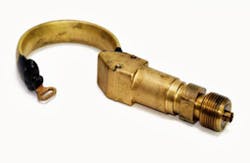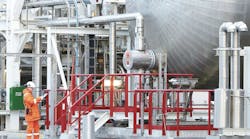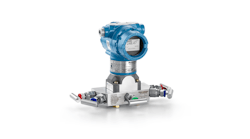If you were to take a standard dial gauge out of service at your plant and disassemble it, you would likely find a thin tube emanating from the socket fitting upward and along the inside edge of the gauge housing. This is the Bourdon tube.
The Bourdon tube is the namesake of Eugéne Bourdon, a French watchmaker and engineer who invented the Bourdon gauge in 1849. Over the years, the Bourdon tube has entrenched itself as the elastic element in most pressure gauges in application today.
The Bourdon pressure gauge operates on the principle that, when pressurized, a flattened tube tends to straighten or regain its circular form in cross-section. The Bourdon tube comes in C, helical, and spiral shapes—although most gauges employ the C shape, which is the type of Bourdon pictured here.
When a gauge is pressurized, the Bourdon creates the dial tip travel to enable pressure measurement. The higher the pressure requirement of the application, the stiffer the Bourdon tube needs to be, which means Bourdon wall thickness and diameter are key considerations for enabling the required tip travel to traverse the necessary movement and, thus, facilitate pressure measurement accuracy. A standard gauge for an industrial fluid handling application would generally call for an accuracy range of 3 to 5 percent full scale. A Bourdon test gauge typically provides accuracy of 0.25 to 1.0 percent full scale.
RELATED VIDEO: How to calibrate a pressure switch
2 key characteristics to consider
John Carissimi, media manager at Ashcroft Inc., says there are two key characteristics to consider when evaluating Bourdon tube-type pressure gauges:
- Repeatability
- Hysteresis
Repeatability in the world of pressure gauges means essentially the same thing it means within the realm of flowmeters or other measurement devices. It is a measure of how consistently the gauge is in accurately repeating the same measurement if all conditions remain the same.
Hysteresis is similar to repeatability, but it’s a little more nuanced. It is a measure of how effectively a pressure gauge is in repeating the upscale reading on the down scale cycle if all conditions remain the same.
"If the hysteresis is bad and outside the specification of the gauge, then the gauge is no good, even if the repeatability is good," says Carissimi.
One process variable that can affect the repeatablility and hysteresis of a pressure gauge is temperature fluctuations. "The nemesis of any pressure device is temperature," says Carissimi.
Matt Migliore is the former director of content for Flow Control magazine and FlowControlNetwork.com.


